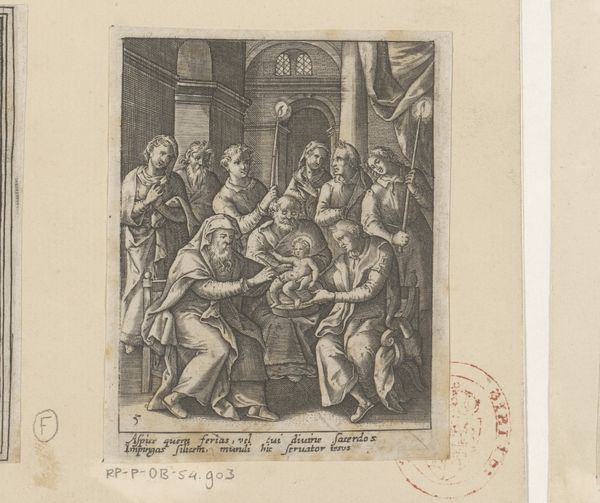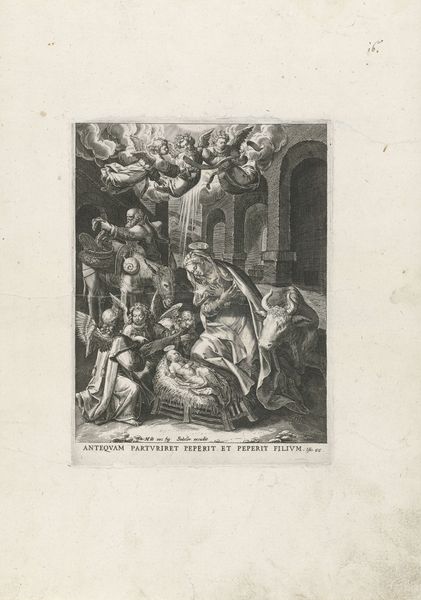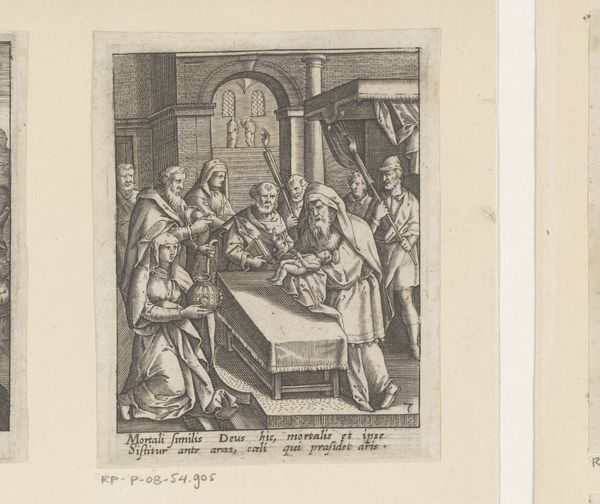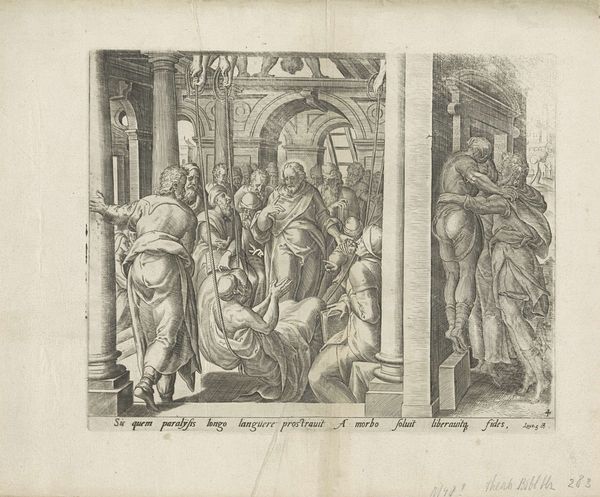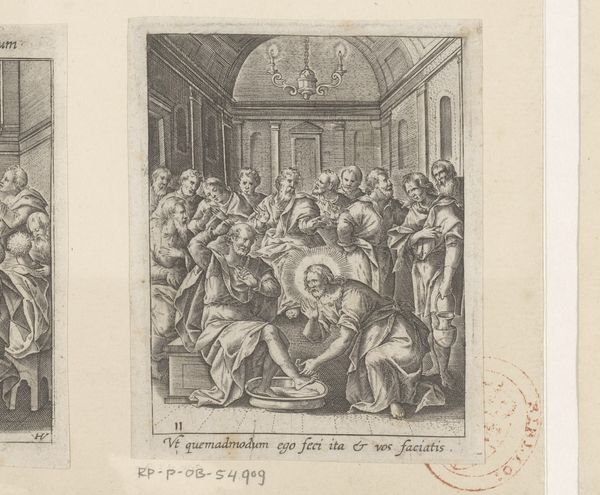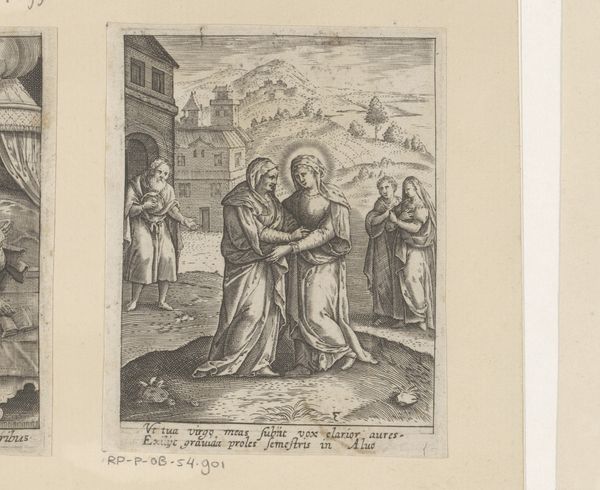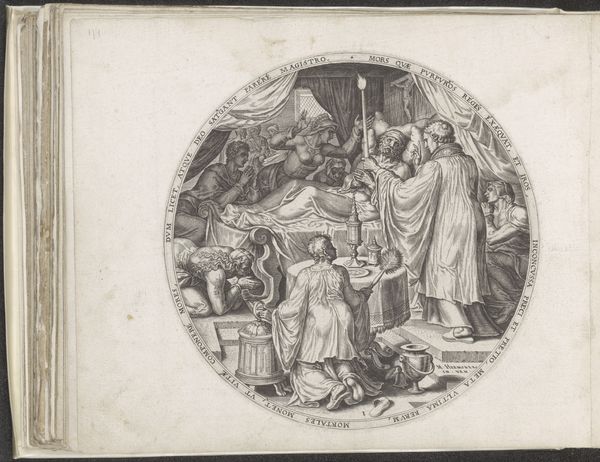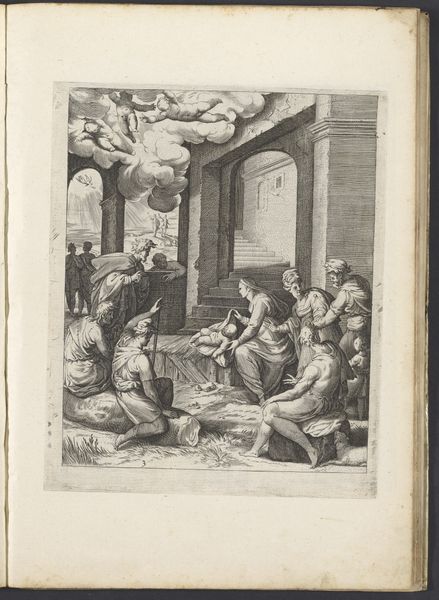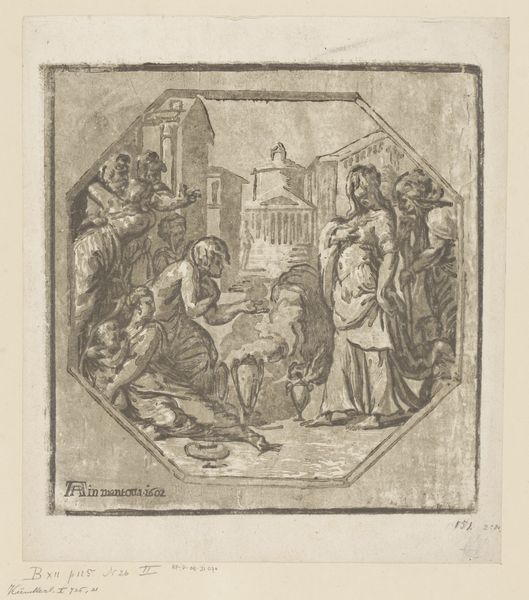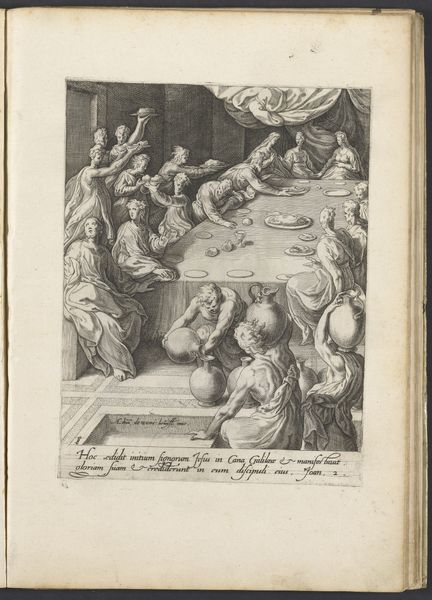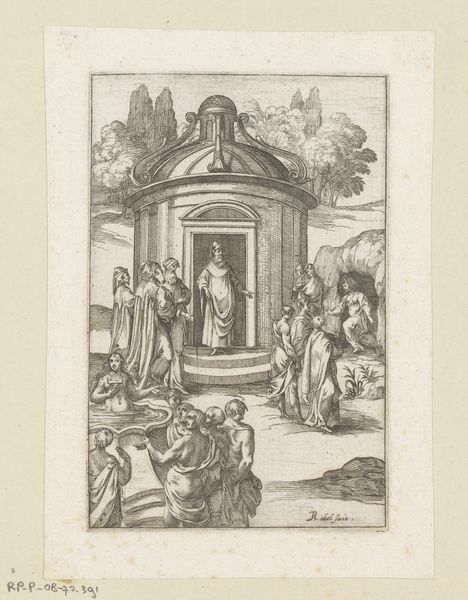
print, engraving
# print
#
figuration
#
11_renaissance
#
history-painting
#
engraving
Dimensions: height 89 mm, width 71 mm
Copyright: Rijks Museum: Open Domain
Curator: This print, titled "Adoration of the Magi," dates back to sometime between 1582 and 1671, attributed to Heinrich Ulrich and currently residing here at the Rijksmuseum. The technique employed here is engraving. Editor: It's rather striking. The monochromatic engraving, combined with the meticulous detail, lends it an almost reverent air. The architecture in the background feels almost oppressive in its formality. Curator: Indeed. Consider how Ulrich uses line and shadow to delineate form. The precise cross-hatching and delicate tonal gradations serve not merely to depict the scene, but to elevate it, conforming to established ideals of representing religious subject matter, especially within Counter-Reformation art. Editor: Right. The composition directs your gaze. We’ve got Mary and the Christ Child as the visual nexus. This positioning, nestled amongst figures and architectural structures, reinforced the Church's role in shaping spiritual spaces. This reminds me, this engraving likely served a devotional purpose and spread theological narratives, right? Curator: Precisely. Furthermore, consider the formal qualities; the compressed spatial recession flattens the depicted scene, turning the naturalistic setting to an evocative space of faith and doctrine. It speaks to something beyond narrative; Ulrich invokes notions of the divine and ethereal by flattening depth through precise graphic elements. Editor: I am left to wonder what a contemporary audience would take away from an image like this now. It feels removed, the context and visual language of faith now obscured. But maybe in that distance, we can still glean something about the enduring human need for shared symbolism. Curator: Perhaps in its graphic refinement, one may even see an echo of a search for objective beauty, even if such a concept is now critically viewed. Editor: Right. Its historical purpose gives way, perhaps, to aesthetic contemplation alone. Curator: Yes, its meaning has evolved and expanded. The materiality of this piece now echoes throughout centuries of religious practice and shifts within our own ways of seeing.
Comments
No comments
Be the first to comment and join the conversation on the ultimate creative platform.


